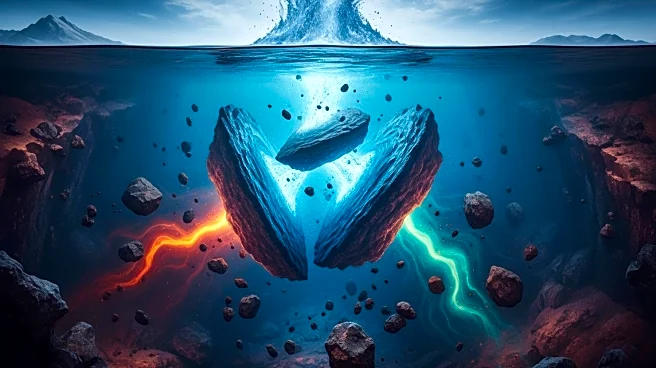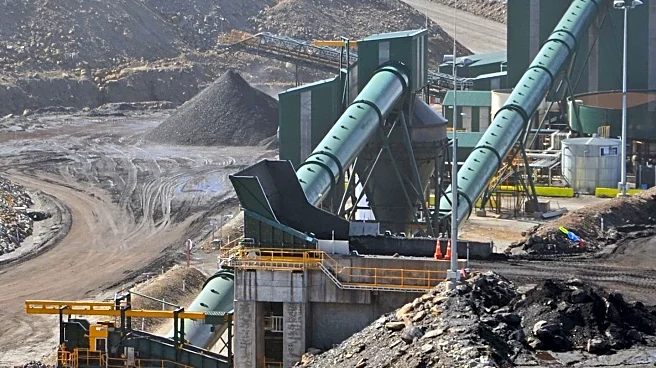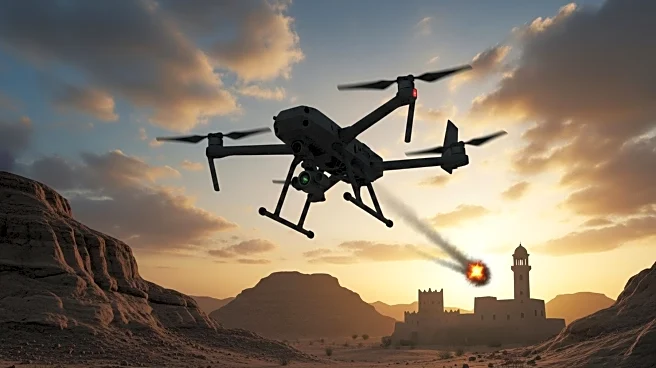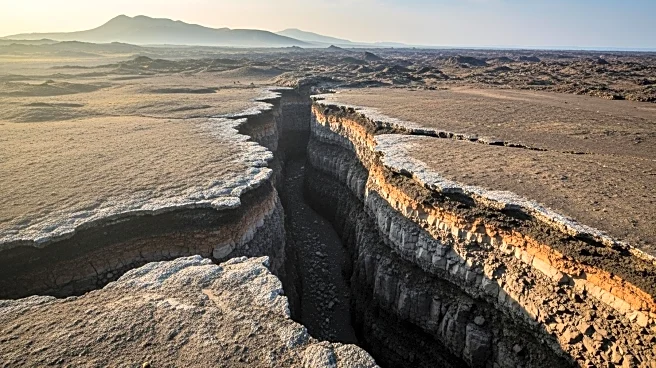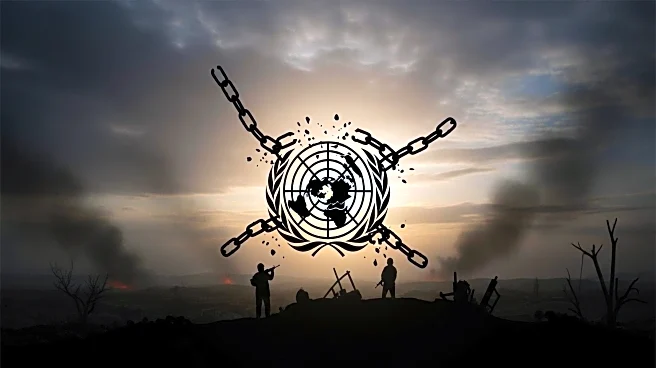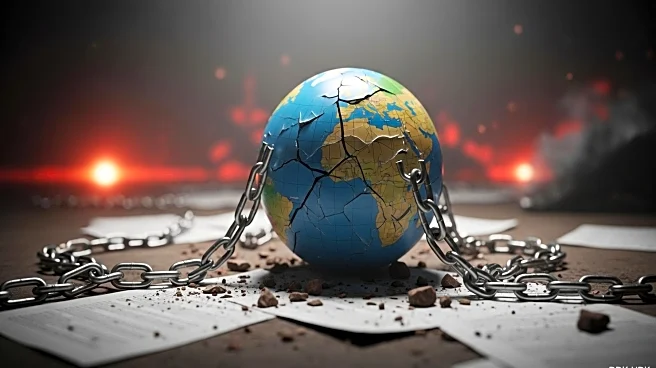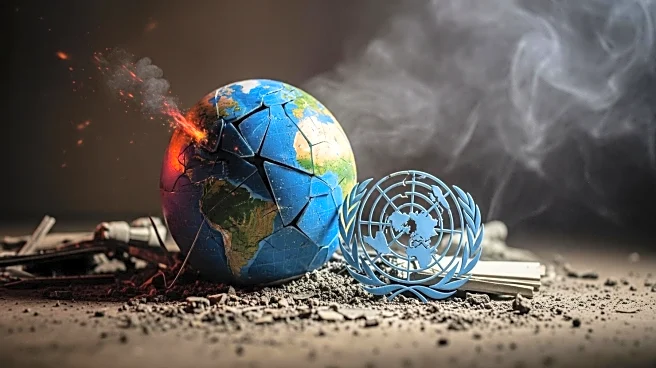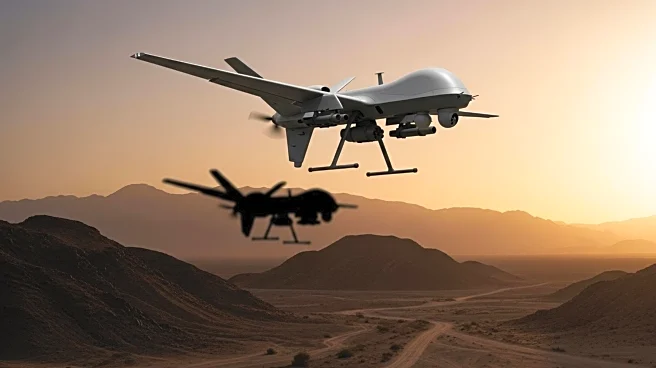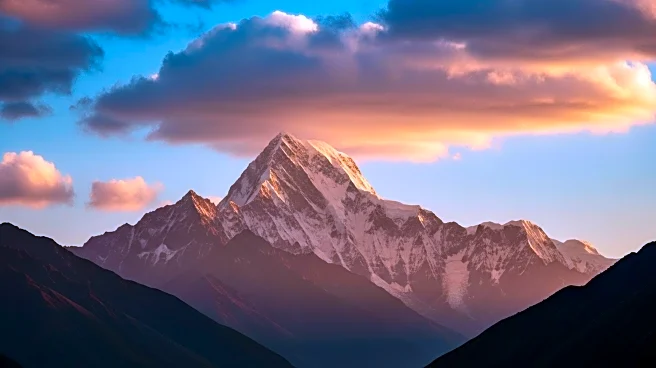What is the story about?
What's Happening?
The East African Rift System is undergoing significant geological changes, as the African (Nubian) and Somali tectonic plates slowly move apart. This process, which stretches from Mozambique to the Red Sea, is gradually pulling the continent apart. Scientists have long believed that the formation of a new ocean would take tens of millions of years, but recent evidence suggests that certain changes can occur much faster. In Ethiopia's Afar region, a dyke intrusion in 2005 opened the crust by up to 8 meters over a few weeks, accompanied by numerous earthquakes. This event has been described as a 'natural laboratory' for studying continental breakup in real-time.
Why It's Important?
The geological activity in East Africa has significant implications for the region's future. Economically, the formation of a new ocean could lead to new trade routes and ports, while ecologically, it could create novel marine habitats. In the short term, infrastructure in the region must contend with the challenges posed by earthquakes, volcanism, and ground deformation. The ongoing rift serves as a reminder of the dynamic nature of Earth's geology, with the potential to reshape landscapes and ecosystems over time.
What's Next?
While the formation of a new ocean is expected to take millions of years, the East African Rift System will continue to experience episodic geological events. Scientists will likely continue to monitor the region closely, using it as a case study for understanding continental rifting and oceanic spreading. The potential for future seismic activity and volcanic eruptions remains, necessitating ongoing preparedness and adaptation by local communities and governments.
Beyond the Headlines
The East African Rift System highlights the power of plate tectonics and the ever-changing nature of Earth's surface. As the rift evolves, it offers insights into the processes that have shaped continents and oceans throughout geological history. The study of such phenomena not only advances scientific knowledge but also informs strategies for managing natural hazards and planning for long-term environmental changes.
AI Generated Content
Do you find this article useful?
